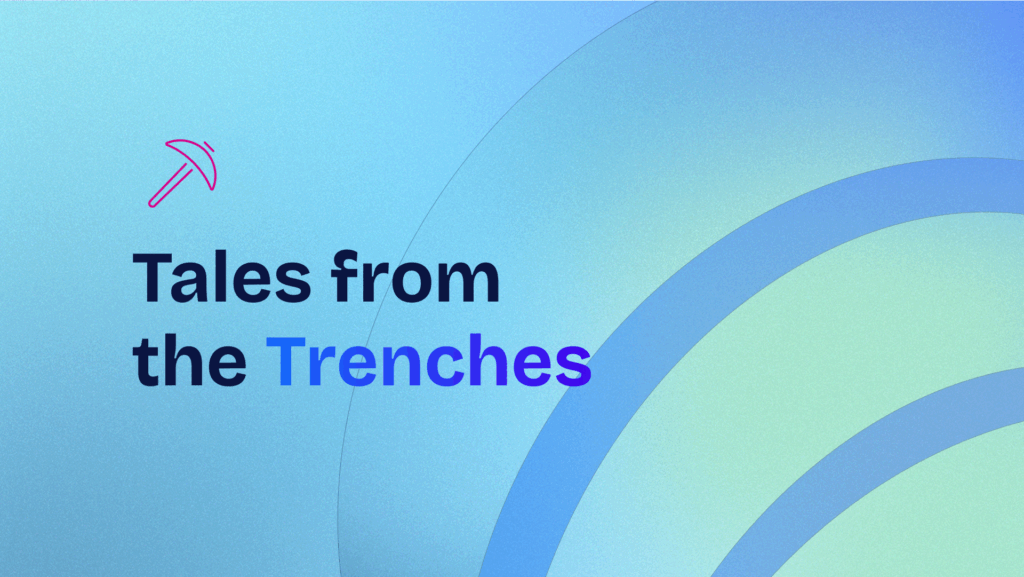


Scaling Beyond Founder-Led Sales
Founders Don’t Scale
If you compare a startup to the Chicago Bulls, the founder would be Michael Jordan. That’s because founders are the elite performers, the leaders of their teams, and almost always the most captivating employee on the floor.
For a founder, selling their product or service comes easy. They built it, they know the problem it solves, and they know how to position it in a way that clearly shows its value proposition.
Founders are also super passionate about their products and services, which makes selling them second nature. They’re also the ultimate authority when representing their company and solution.
Takeaway: Don’t think of a founder like you would a salesperson, think of them as an evangelist, in a class of their own.
But it’s these exact skills that make it difficult for founders to scale their businesses because scaling involves handing off a good amount of responsibility for generating sales to other employees.
This is not surprising, of course. Founders think differently. They challenge interpretations. They view the world in the same way that Pablo Picasso views art. When they create something, other people may see the obvious but founders see something completely different that leaves others scratching their heads.
Takeaway: You can’t scale founders. The challenge for founders boils down to how they can transfer their knowledge and passion to new sales reps that don’t know the company or industry as well and are likely in a completely different mindset. After all, early hires may very well be young professionals just out of college trying to lock down their first job.
Reaching Message-Market Fit
To be successful in scaling your sales team, the first thing you need to do is paint a really good picture of your target customers, something you know intimately, but they don’t. This means going beyond the high-level details and creating actual personas. It’s so much more helpful if your new sales reps know:
- What the customer’s job is all about
- How it functions, how they feel about it
- Their budget and how they get it
- Who they report to
- How they are measured
- The key pain points in their business
- How that pain point directly ties to your solution
- What is the measurable business impact of solving these pains
- What customer ROI stories can we share as proof of this impact
Takeaway: As founders, we’ve all had product market fit beaten into us and we all strive to achieve it. Now, the goal is to achieve message-market fit, so your team has the appropriate talking points for the appropriate personas.
Just because your new salesperson doesn’t think like Picasso it doesn’t mean they can’t paint a pretty decent picture if you give them the proper canvas, tell them what colors to use, and show them what they are supposed to paint.
This is also a good time to help your sales reps understand how to use important marketing materials and which materials should go to which personas, depending on their stage in the buyer journey.
Tip: One way to do that is to map the customer journey, illustrating what questions customers will have and what they will need to believe to take the next step. The Advanced Content Roadmap Generator is a great tool for defining what marketing materials you need for every step of the customer’s journey.
Making New Sales Reps Sales Ready
It is important to remember that you are going to be demanding a lot from your sales reps so go into this with reasonable expectations. Sales reps are not going to be able to do a sales pitch as you would and their message may not be perfect but if they can reach 80 percent accuracy that’s pretty good.
You’ll want to prepare your sales team for the competition and certain scenarios in which competitors may be better suited than your company to solve a specific client’s problem.
Yes, of course, you want your team to fully believe in your product and the company but the reality is that it won’t be for everyone. It’s better to be transparent so your sales team doesn’t waste time pursuing clients that are going to be really difficult to close and instead focus more on promising leads. The sales team will also benefit from having a clearer understanding of the competitive landscape.
Tip: A great tool to help do this is Battle Cards. Hubspot’s generic Battle Card is a good start, but for more pinpoint differentiation these offensive and defensive battle cards may help. Todd Caponi’s 4.2 Star rating covered in the book The Transparency Sale is also a helpful guide.
DOWNLOAD Competitive Sales Matrix – Offensive & Defensive Battle Cards Here >>
Okay, so now you’ve told your new sales team about the customer, arrived at message-market fit, preempted any competitor positioning, and are ready for them to hop on some sales calls.
Does this mean they are now on their own? Once upon a time, it might have but with technology, there are actually some great tools you can use to continue guiding your sales team without breathing down their necks.
I am obviously referring to the power of conversational artificial intelligence (AI) tools such as Gong.io and Chorus.ai. These platforms record, transcribe, and analyze sales calls and then provide actionable insights in real-time that can help a sales rep improve their pitch.
Through these platforms, you can see how critical information is being presented (or not) and then hone the messaging. These platforms also give founders a virtual seat on calls to observe asynchronously or to actually help the sales rep during the call. Conversational AI may sound like a bizarre or overbearing tool but I can assure you that it’s really your best friend, so please take advantage.
Tip: Build your own dashboard in Gong.io or Chorus.ai that shows you how many conversations over what cadence your team is having with prospects at key stages in the sales cycle. It’s a quick way to qualify your pipeline, dive in to personally hear the progress on key accounts, and help you give feedback to reps on specific moments in the customer conversations.
The Founder’s Role in Sales
Initially, while scaling sales, the founder is going to spend a lot of hands-on time with the team to build the sales funnel.
Start at the top of the funnel and begin to relinquish responsibility gradually. Perhaps you begin by letting new sales reps manage inbound leads and outbound prospecting. Then you’ll want to get them proficient in leading discovery calls or first demos.
The goal for founders isn’t to hand off the full sales process. Instead, their time and involvement should move further and further down the funnel, eventually only spending time in late-stage deals.
This doesn’t mean you’re no longer part of the process but rather that you’re resuming your role as the captain, as Michael Jordan. Now, you can position yourself as an asset and a thought leader that will ultimately accelerate deals through the funnel.
Tip: Salespeople should take the lead on activities such as setting the agenda, preparation, and next steps. You, as the founder, will lay out the vision for the company and the roadmap for innovation. As initial leads become qualified and forecasted deals that’s when you’ll step up to the plate. Maybe it’s time for a customer to pilot your product, address unique integrations or feature requests or hear from an expert, that’s when the founder enters the funnel.
We hope this has given you a good framework to begin scaling your sales efforts. Please stay tuned for our next blog post where we will discuss how to structure the sales process from the top of the funnel (ToFu) to the middle of the funnel (MoFu) all the way to the bottom of the funnel (BoFu).
Part 2: Founder Funnel Management
Read part of two of this series, Founder Funnel Managment.
Subscribe to our newsletter to get more great content like this (once or twice per month).
Our Resources
Get access to free tools to help accelerate your company’s growth, regardless of a future partnership with Companyon—because, we’re here to help.
Our Newsletter
Join our newsletter for helpful guides, expert insights and company updates delivered monthly to your inbox.



 Blog
Blog

